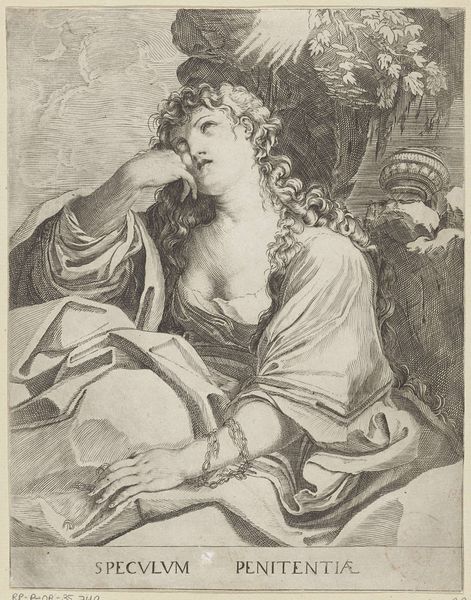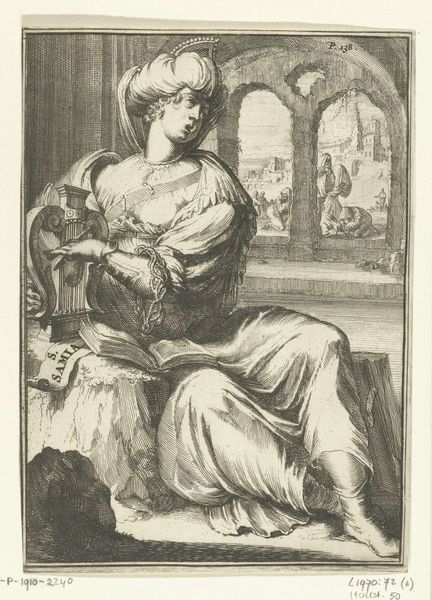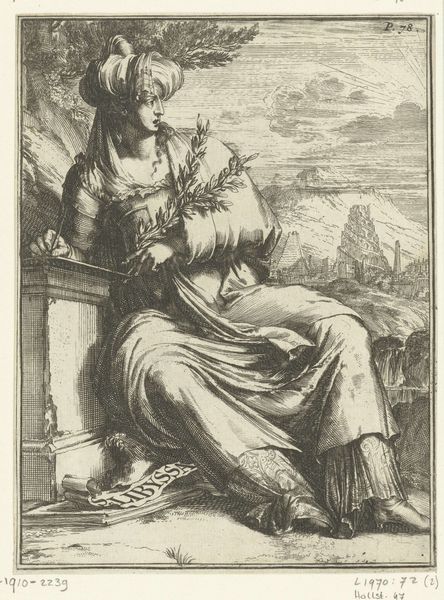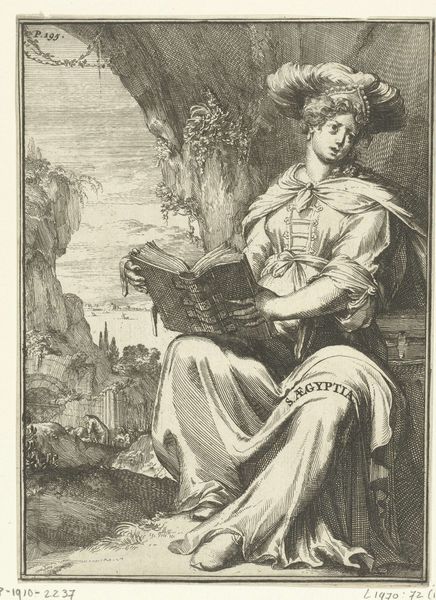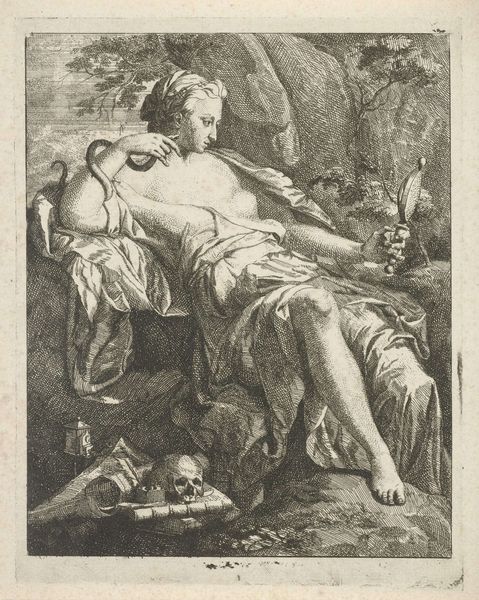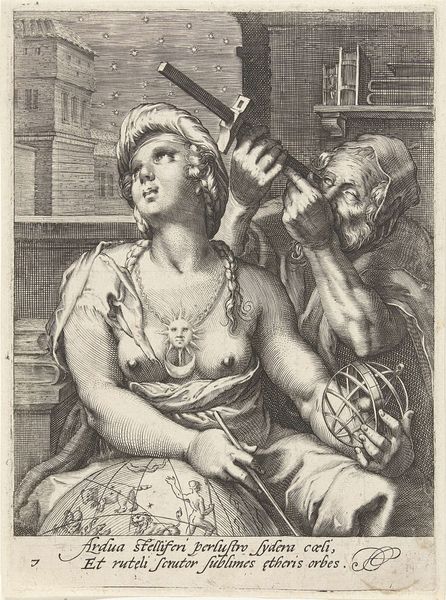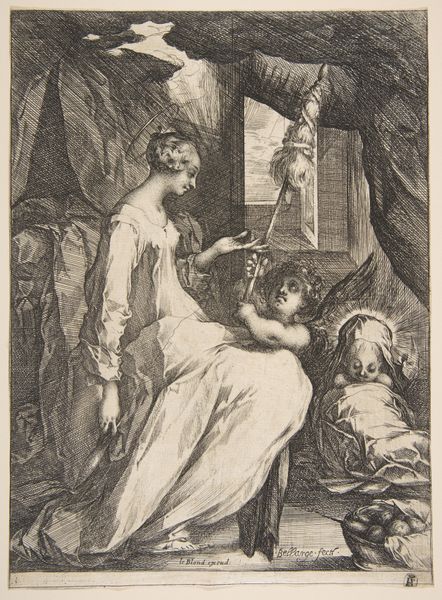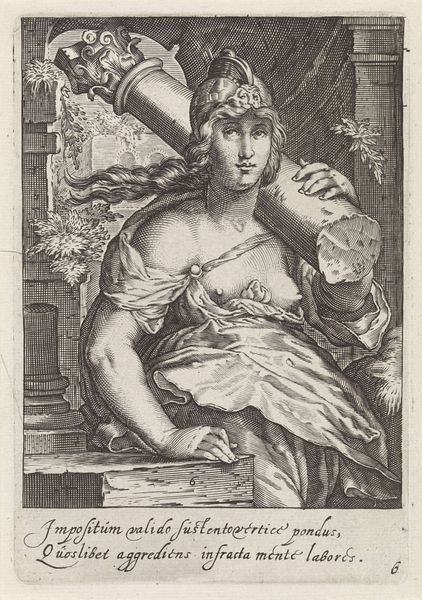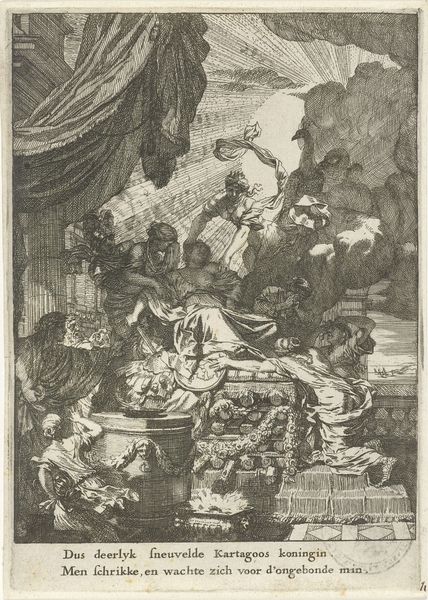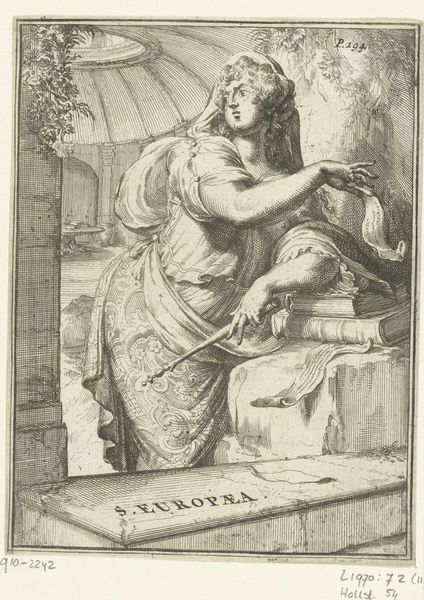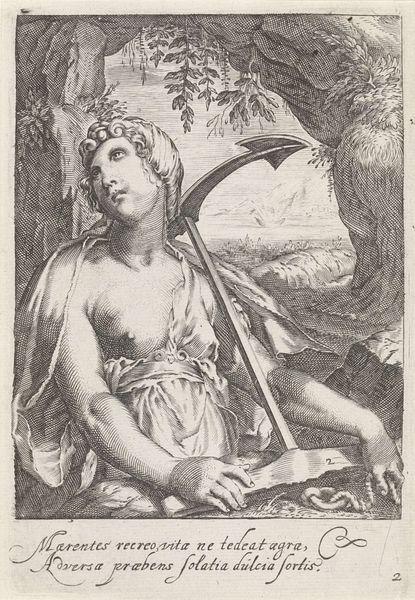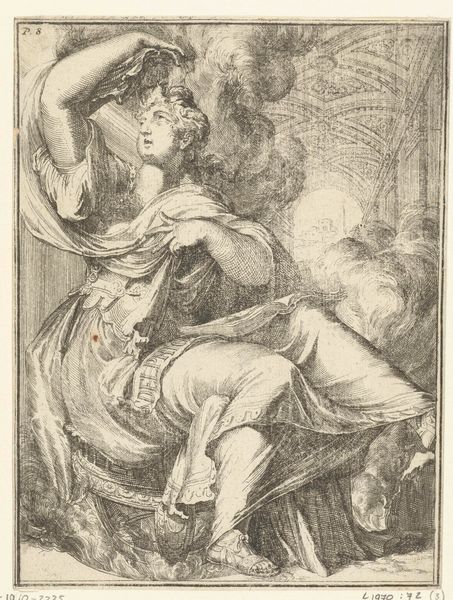
engraving
#
allegory
#
baroque
#
landscape
#
classical-realism
#
nude
#
engraving
Dimensions: height 255 mm, width 193 mm
Copyright: Rijks Museum: Open Domain
Curator: Today, we're looking at "Zomer," an engraving made between 1690 and 1700 by Jan Broedelet. What catches your eye first about this piece? Editor: The slightly bewildered expression on the face of the central figure. She's reclining, draped in fabric, but seems almost caught off guard. Is she surprised by the viewer? The overall mood is humid and heavy like a drowsy afternoon. Curator: That figure is meant to be an allegory of Summer, the season personified. Look at the materials depicted: the sheaf of wheat, the harvesting tool, all symbolic of summer's bounty. These would have been readily available objects of inspiration and labor, rendered permanent through printmaking, allowing for the mass distribution of seasonal imagery. Editor: Yes, there’s also a mischievous cherub holding a parasol overhead, like he’s trying to keep the sun off her...though it's not doing a fantastic job! I love how it’s an allegory, but it also hints at the more uncomfortable aspects of summer—the need for shade, the potential for sunburn. It feels oddly relatable. Curator: Broedelet employed the Baroque style prevalent at the time. Engraving, as a reproductive medium, allowed for wide distribution of such allegorical images. The line work here, created through laborious incising, conveys texture and form that echo the Classical ideals interwoven with a distinctly northern Baroque aesthetic. Editor: Thinking about the labor—the hours it took to create the intricate details in the engraving. It makes you wonder about Broedelet’s life. What were his summers like? Did he spend them observing wealthy landowners, or was he a participant in the rural, working landscape himself? What materials were available, what would that have looked like for someone at the time? Curator: An excellent question to ponder. These engravings helped standardize imagery while quietly encoding subtle clues about access to resources and power dynamics. The work encourages us to look closely, not just at what's represented, but also at how meaning is constructed and disseminated through material culture. Editor: Absolutely. It began as this somewhat idealized vision of summer, and we wound up talking about labor, materials, social structure—a truly bountiful journey!
Comments
No comments
Be the first to comment and join the conversation on the ultimate creative platform.
